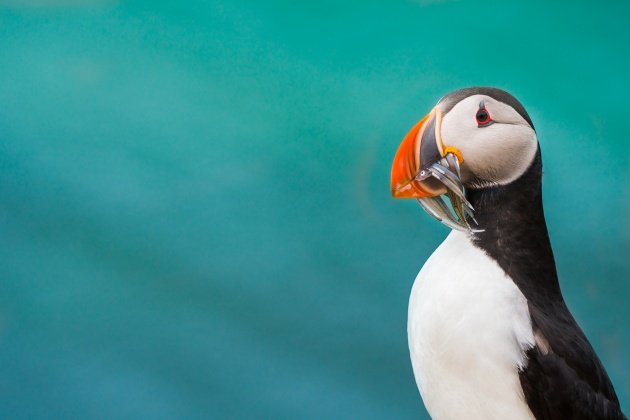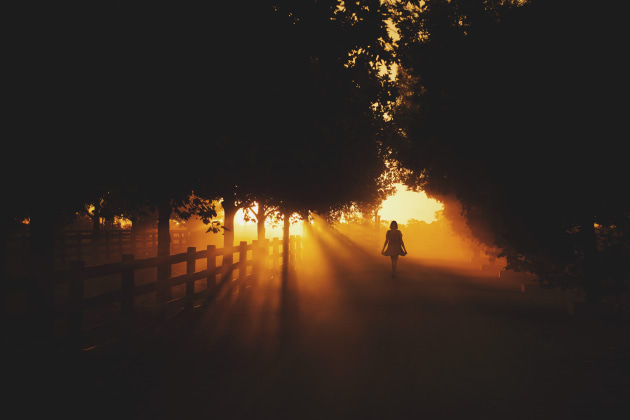#Instagood – Building your business with Instagram
With all of the Kardashians, sunsets, and airplane window photos, is Instagram a viable marketing tool for professional photographers? In a universe where networking has become not only online and global, but open to anyone who has a smartphone, Chelsea Miller spoke with Instafamous photographers and influencers to discover what the benefits are for pro photographers, and how not to get lost in a sea of selfies.
The seemingly bottomless pit that is social media can leave anyone lost in cyberspace, but for a professional looking to harness the benefits and opportunities available on these platforms, it can seem like a black hole of endless scrolling, posting, and juggling hashtags and geotags all the while not knowing what the return may be. When it comes to social media, Instagram is the platform best tailored for photographers since it is literally a giant photo album, but how does it rate as a business application and marketing tool to help you get more clients? Is using it for business worth the time and effort invested, or does it just equate to countless hours of lost work spent scrolling and double-tapping looking at eye candy?

#Discoverable
An Instagram account, first and foremost, needs quality photos in its feed to catch the attention of prospective clients, photo editors, and the general population keen to find inspiration via the work of professional photographers. To do this, you have to get yourself out there, but many hold back not knowing what or how to post in order to be effective. This is where one pretty strong piece of advice reverberates through many Instagram professionals: post what you want to post.
Canadian photographer Scott Rankin (@othellonine) suggests remembering who you are and what you like. “I think that the most common mistake people make, myself included, is getting hung up on taking photos that I know Instagram will like, and not taking enough photos that I find rewarding,” he says. “I use to get bothered when I would post a photo I loved, and no one liked it, but an easy shot 10 feet from the parking lot of a mountain lake might get thousands of likes. [Just] don’t take it personally.” Creating an authentic experience is what makes you an individual to the masses.
Specialising in lifestyle and advertising, and “the first Italian photographer on Instagram”, Simone Bramante (@brahmino) has a following of over 940,000. He believes that “the most important thing is to be creative and original when creating content”. Bramante has had his distinct style copied by others, and cautions creatives to find their own voice, even when inspired by others.

Australian travel and wedding photographer Katie Mitchell (@katiemitchellphotography) has recognised the desire among Instagram users to be transported through her images of travel and lifestyle. She encourages others to find the niche that will connect them to their following. “Be real and stay intentional. Your followers want and appreciate authenticity. Tell a story – Instagram is a great place for escapism,” she says. Finding your niche is important, but if you are keen to vary your content, then consistency in aesthetic is your saving grace.
California-based wedding and lifestyle photographer Elizabeth Messina (@elizabethmessina) posts about all facets of her life, but is still strict about dependability. “For me, consistency is very important. I think of my Instagram feed as a curated space that is in constant flux,” she says. “I strive, as an artist, to express myself authentically and thoughtfully, and yet still have balance in my images, and then in my overall feed.” As a photographer, you might already have a specific look, but moving from one image or project to the next, especially on the fly with Instagram, is something that photographers should be aware of, Messina cautions. And she says that “a consistent aesthetic requires a bit of discipline and self-awareness”. A connection throughout your feed will start to connect you to the community of people just waiting to see what you’ll post next.

#Hashtag
The shortest distance between your post and the community you are seeking is a hashtag, or maybe thirty. Two types of hashtags serve as a connection; Searchable Hashtags and Submittable Hashtags. Searchable hashtags are what Instagrammers will use to find images related to the topic they are interested in such as #travel or #wedding, whereas Submittable Hashtags are indicators to particular curated Instagram feeds on which you are interested in being featured, such as #themoderndayexplorer or #agameoftones. It’s not to say that people don’t also search these “submittable hashtags” as well.
The way people hashtag is entirely personal and whether you want to use them minimally or hashtag like crazy is up to you, but freelance social media marketer, and Australia’s first professional Instagrammer, Lauren Bath (@Laurenepbath) recommends going all out. “Definitely use every edge possible,” she explains. “I do everything. I use a geotag because geotags give you the potential to be in the top posts. I use 30 hashtags because Instagram allows you to use 30 hashtags, and I put them in the comment box under my main caption. I tag in people even if it’s not for work. I’ll tag in the place that I’m at, and people I want to see the content.” Being linked to the hashtags you choose will speak to the audience who you are looking for; or rather the other way around.

#Squadgoals
Getting likes and followers from real people doesn’t just come from posting the best photos, but also by engaging with your like-minded community. Elizabeth Messina explains her approach when it comes to engaging with her Instagram community: “I try to respond to kind comments. I also make an effort to look at the images that people tag me in and respond to those,” she says. “Sometimes I get lost down a beautiful rabbit hole, exploring design and food feeds, or photographers from all over the world.” These rabbit-hole moments are not just for daydreaming, but for reeling in potential followers, and potential clients, back to your feed. Bath, whose following is 455k strong, reminds us that when you are engaging with accounts on Instagram, you are still engaging with people. “In my business, I put people and relationships first, and that’s something that a lot of photographers don’t think about, and it’s to their detriment if you ask me, because people are everything, and it’s these people that later turn around to be the head of marketing for, say, a tourism board, or they know somebody, or they facilitate an introduction that sees a real, meaningful opening for me or opportunity for me,” Bath says.

Being an engaged Instagrammer expands your global network and potential, as long as you are thinking about the people behind the accounts. Bath suggests thinking of Instagram as a portfolio, and to be posting “the sort of work you hope to attract, and the sort of work that attracts the clients that you want”. Putting your best foot forward and remembering who you are looking to attract will help you understand what you want to get from Instagram. Following and engaging in a community of like-minded photographers and brands will act as a source of inspiration as well as open a window for a connection to be made and a conversation to start between you and potential clients.
You might feel that an image is so strong and powerful, that no words are necessary to describe it, but leaving a caption out could be to your detriment. “Where you write your caption, that is the space you can get people invested in you,” explains Bath. “The image sucks them in and gets their attention, and once you have their attention, for me the most powerful tool is to want them to read your caption, especially on a platform that is so saturated like Instagram where there’s so much content, and people are just flinging through it. So you have to give them something.” Giving a caption to make context, tell a story, give knowledgeable information, or even be funny gives yet another boundless opportunity to connect with your audience as a person, and not just a screen.

#NoFilter
Instagram has created the first public space where the people taking the photographs are their own curators, something photojournalist Adam Ferguson (@adamfergusonphoto) is thrilled about. “I have direct access to an audience which is a very interesting dynamic as a visual storyteller or a photographer,” explains Ferguson. “Traditionally, photographers or photojournalists, or anyone working editorially, would have to use a platform of a magazine or a newspaper, or if you’re an art photographer you use a gallery to communicate to an audience. Instagram has been a very liberating thing because you can build up a following, and you have direct and instant access to an audience.” By breaking down the traditional gatekeepers of photography, Instagram’s freedoms have allowed for your audience to not only have contact with your images, but a direct contact to you as a photographer and business person.

Having the autonomy to post as you like gives way for photographers to give a more personal insight into themselves, and not just their subjects – an insight that can be appreciated by clients looking to collaborate with you. Messina posts who she is as a photographer, a mother, and as a person thereby giving much more insight into who she is and how she works than what can be seen on a website. Keeping her feed a mix between personal and professional adds to the comforting, personable feel that her aesthetic creates for the audience naturally. When posting from all facets of life, Messina warns that aesthetic strength is a must to keep a feed reading like that of a professional photographer looking to be commissioned.
Messina suggests posting smart, instead of incessantly. “Do not share a dozen images in a row of a similar situation,” warns Messina. She says that when she feels compelled to overshare, she recognises the need to curate her feed. And when the feeling to share everything becomes overwhelming, she posts the multiple images in an Instagram Story which allows her to show multiple photos and videos of a single shoot without clogging up her followers’ feeds.

#ClicksToClients
Keeping yourself and your portfolio relevant in the minds of editors, brands, and future clients with constant reminders by showing off your skill set is an advantage taken by adventure and wildlife photographer, Scott Portelli (@scott.portelli). “[Instagram users] see that I primarily do wildlife [photography],” he explains, “but that I also do aerial, and that I’m a licensed drone pilot as well as an underwater photographer. I try to use imagery that relates to all the skill sets that I use,” he says. Keeping a close eye on trends, Portelli often posts photographs from a certain region in the lead up to pitching tours and workshops that he plans to run in that location. It’s this type of targeted marketing that makes Instagram perfect for professional photographers.
Nothing speaks to a photographer’s brand more than their images, and unlike Facebook, YouTube, magazines, or any other traditional advertising avenue, Instagram allows you to put your images and brand in front of a potential audience of millions, for free. And if that isn’t enough, Instagram has recently added more tools for professionals, including direct contact buttons to your phone, e-mail, and address, metrics to keep track of feed, options to post to other social media sites, and sponsored posts.

As an influencer, educator, travel and adventure photographer, Colby Brown (@colbybrownphotography) markets his brand with his Instagram feed. “It was a mixture of things for me and my brand,” says Brown. “Social media is a large avenue in terms of how I not only increase brand knowledge, but also for marketing products and services that I work with, or sponsors, but also my own products and services.” The value added by a photographer bringing an additional social media reach by the thousands, or even hundreds of thousands, is not going unnoticed by photo editors, brands, and clients when looking for photographers to commission, or even to learn from.
Heavily invested in photo education, Brown sparks interest in new students by using Instagram as a starting off point for his followers to learn from him, “including aspects of the camera gear that I use, the settings that I use, and answering questions helps spur more clients that I sign up for my workshops, or buy my books or video tutorials.” Reaching out to students as well as a younger demographic of clients has also been made easier by handing out his Instagram handle rather than a business card when he feels the potential client will be more receptive to adding him on Instagram, rather than making their way to his website.

#Bots & #Automation
Though some photographers choose the less personal route and use automation and bots to boost their following by automating procedures such as commenting, liking, and following (and usually subsequently unfollowing), Bath strongly warns against this approach. “Every person who uses automation is doing it at the expense of people who don’t,” Bath explains. Because of the algorithms that Instagram uses to curate a feed, it is tricked into thinking that people who use automation have been actively engaging like a human user would and bumps their post up to be seen more. This leaves people who have engaged personally with less airtime, and to Bath it’s an unreasonable advantage. “If you ask me, if you are not prepared to do the work and if the only way you can succeed is by using automation at the expense of other people, do you really deserve to be there? I think that the answer is ‘no’.” It’s not just your moral integrity that Bath warns against, but that what you are getting by using automation and bots are surface level relationships. The authentic relationships gained by genuine engagement is the basis for real-world success from Instagram.

#MicDrop
Once you break through all the selfies and the memes, you’ll see that there is a whole world of photographers not just posting on Instagram, but working on Instagram. Professional photographers are harnessing the marketing value that has been created by the social media platform. “IG is a powerful platform for you to put yourself and your images out there and reach a potential audience or client every single day!” says Bath. It’s the photographer’s new business card. Updated more often than a website, Instagram gives potential clients and collaborators the insight to you, your work ethic, your consistency, and even your demeanour. Does it take time and thoughtful energy? Yes, but who doesn’t want the opportunity for millions of people to see their photographs.

Top tips to instagram success
ENGAGE: Spend as much time as you can building your Instagram community.
HASHTAG: Use Searchable and Submittable Hashtags to let people know who you are and what you are doing.
GEOTAG: These help you to engage with the local community, and to get into Instagram’s top picks.
BE CONSISTENT: Your followers are your followers for reason.
AVOID BOTS & AUTOMATION: Surface level engagement will get you nowhere.

Contacts
Lauren Bath (@laurenepbath) 455k followers
Simone Bramante (@brahmino) 940k followers
Colby Brown (@colbybrownphotography) 239k followers
Adam Ferguson (@adamfergusonphoto) 117k followers
Elizabeth Messina (@elizabethmessina) 202k followers
Katie Mitchell (@katiemitchellphotography) 83k followers
Scott Portelli (@scott.portelli) 50k followers
Scott Rankin (@othellonine) 181k followers

